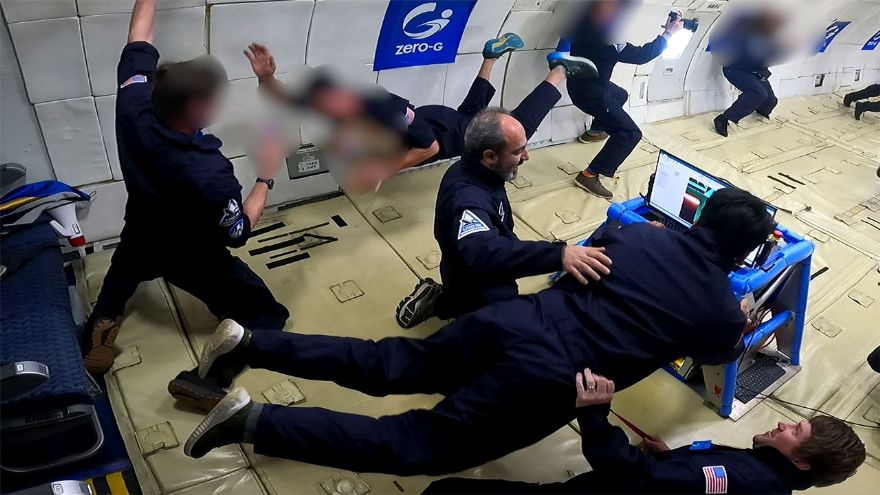
Masoud Mahjouri-Samani, Godbold Associate Professor in the Department of Electrical and Computer Engineering at
Auburn University, Alabama (USA), successfully tested a compact nanoparticle 3-D printer aboard a series of NASA-sponsored parabolic flights simulating zero gravity, thereby marking the airborne debut of LASED (laser ablation and sintering enable deposition), a fully integrated, low-power system designed to fabricate circuits, sensors and antennas in space.
Mr Mahjouri-Samani, who made the flights with graduate student Aarsh Patel and research engineer Colton Bevel, said: “This was a one-shot win. From the very first parabola, the machine printed beautifully. That level of success on a first flight is extremely rare.”
The project — In Space Dry Printing Electronics and Semiconductor Devices — received an $870,000 grant from
NASA earlier this spring, and the tests were undertaken aboard a modified Boeing 727 (often dubbed the ‘Vomit Comet’) in which the team experienced about 30 parabolic arcs, each offering about 23 to 25sec of microgravity. Mr Mahjouri-Samani said the test points to a future where astronauts can build what they need in orbit, without relying on Earth-bound supply chains. “In space, you want to print what you need, when you need it. That could be antennas, temperature or humidity sensors, crew health monitors — even chemical sensors. We can also design and build our own circuits on site.”
The 3-D printer measures just 24in on each side and consumes less than 500W making it ideal for use aboard the ISS or future lunar missions; and despite its small footprint, the machine includes a nanoparticle generation system, a delivery mechanism via nozzle, and a sintering process — all fully automated.
“It is a fully functional machine in which everything is integrated. You can program it to complete complex tasks in 20sec. In space, without that time constraint, it can do even more — and the system has been engineered to withstand intense conditions, including gravitational forces up to 18g.”
Following the flight, Mr Mahjouri-Samani — founder and president of dry multi-material printer startup NanoPrintek — submitted a short technical report to NASA reporting the outcome. A comprehensive report, including side-by-side comparisons of 3-D prints produced in microgravity and on the ground, measuring roughness, thickness, resistivity and other physical properties, will follow shortly.
In summary, he said: “The machine works extremely well in zero gravity. What we 3-D printed up there was either equal to, or in some cases better, than what we produced on Earth.”